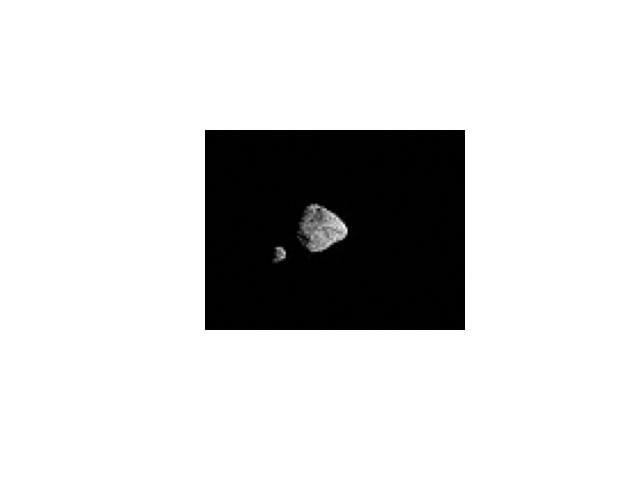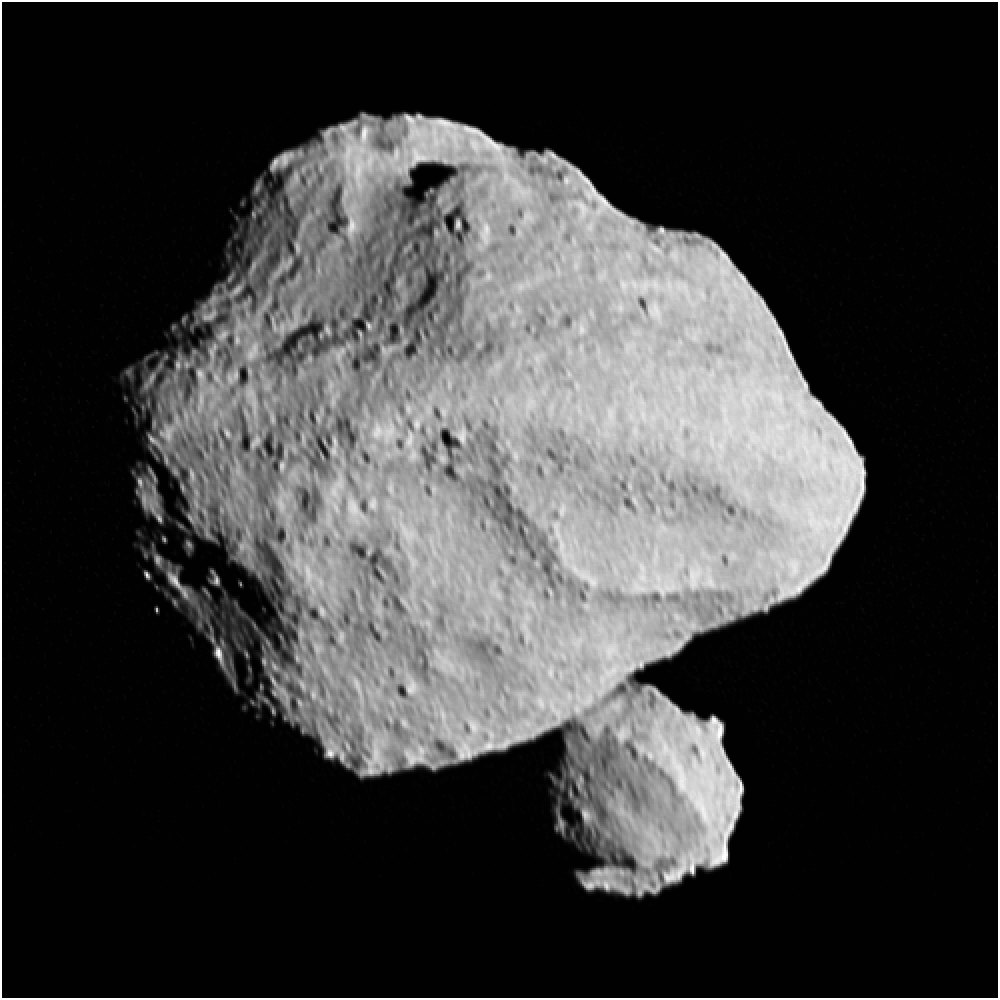
NASA’s Lucy spacecraft delivered an extra-special data package when it flew past asteroid Dinkinesh in the main asteroid belt between Mars and Jupiter on Wednesday.
Dinkinesh was a trial target for the mission’s terminal tracking system as it flies toward a collection of ancient asteroids near Jupiter called the Trojans. Up until Wednesday, Dinkinesh was considered the smallest asteroid in the main belt to ever get an up-close spacecraft visit. But Dinkinesh was usurped when a tiny moonlet appeared orbiting around it.
Dinkinesh and Its Moonlet
Lucy principal investigator Hal Levison calls the finding “marvelous.” According to an announcement from NASA published Thursday, the team had some suspicions about a second rock. Dinkinesh changed brightness in the weeks prior to Lucy’s flyby, a hint that, as the spacecraft crept closer, a moonlet was creating noticeable shadows as it passed in front of the larger object.

The finding offers bonus science to what was otherwise a test-heavy rendezvous. Dinkinesh is interesting because of its location and diminutive size, at just half a mile across at its widest. The smaller asteroid is a measly 0.15 miles across, roughly the size of half a city block. In the coming weeks, Lucy’s team will download even more data from the encounter. And someday, this could add nuance to what’s already known about the main asteroid belt.
Testing Out Lucy’s Ability to Lock Onto a Target
The goal of the game was to test out Lucy’s systems. When the spacecraft launched in 2021, Lucy was set to test its systems on another main belt asteroid, Donaldjohanson. Last year, the Lucy team realized the spacecraft would fly near Dinkinesh, so they rerouted to get really close. This second testing opportunity provides a more robust evaluation of how well the spacecraft can lock onto a target, a critical feature of the mission that will be doing all of its science while careening past the elusive Trojans at 15,000 miles per hour.
The Trojans are a strange lot. They orbit the Sun inside Jupiter’s orbit, just ahead and behind the gas giant as two grand swarms. Lucy will spend the great majority of its time flying through space, weaving through the inner Solar System, and getting just moments to take imagery and data on each one. Wednesday’s flyby is giving the team confidence that Lucy is prepped for what lies ahead for this decade.







